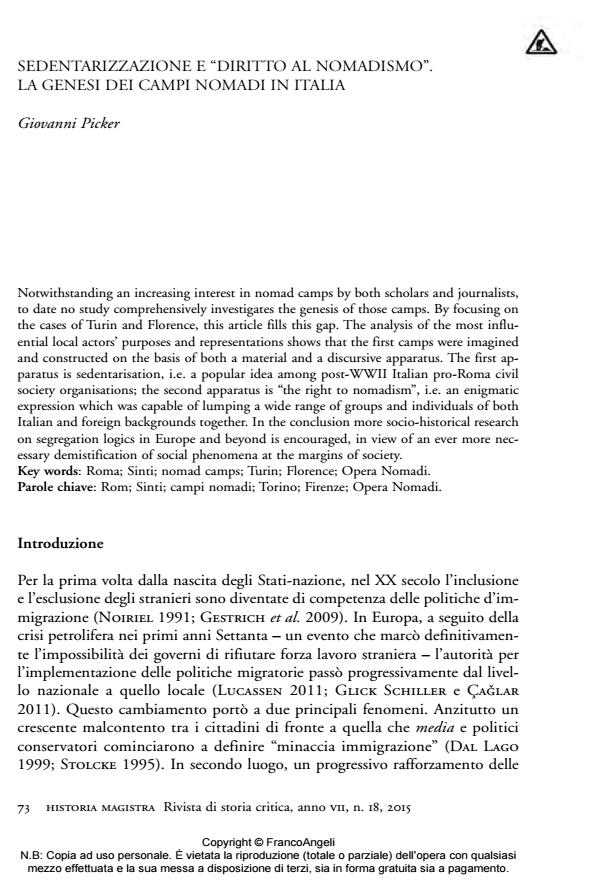Sedentarizzazione e "diritto al nomadismo". La genesi dei campi nomadi in Italia
Titolo Rivista HISTORIA MAGISTRA
Autori/Curatori Giovanni Picker
Anno di pubblicazione 2015 Fascicolo 2015/18
Lingua Italiano Numero pagine 12 P. 73-84 Dimensione file 101 KB
DOI 10.3280/HM2015-018006
Il DOI è il codice a barre della proprietà intellettuale: per saperne di più
clicca qui
Qui sotto puoi vedere in anteprima la prima pagina di questo articolo.
Se questo articolo ti interessa, lo puoi acquistare (e scaricare in formato pdf) seguendo le facili indicazioni per acquistare il download credit. Acquista Download Credits per scaricare questo Articolo in formato PDF

FrancoAngeli è membro della Publishers International Linking Association, Inc (PILA)associazione indipendente e non profit per facilitare (attraverso i servizi tecnologici implementati da CrossRef.org) l’accesso degli studiosi ai contenuti digitali nelle pubblicazioni professionali e scientifiche
Notwithstanding an increasing interest in nomad camps by both scholars and journalists, to date no study comprehensively investigates the genesis of those camps. By focusing on the cases of Turin and Florence, this article fills this gap. The analysis of the most influential local actors’ purposes and representations shows that the first camps were imagined and constructed on the basis of both a material and a discursive apparatus. The first apparatus is sedentarisation, i.e. a popular idea among post-WWII Italian pro-Roma civil society organisations; the second apparatus is "the right to nomadism", i.e. an enigmatic expression which was capable of lumping a wide range of groups and individuals of both Italian and foreign backgrounds together. In the conclusion more socio-historical research on segregation logics in Europe and beyond is encouraged, in view of an ever more necessary demistification of social phenomena at the margins of society.
Parole chiave:Rom; Sinti; campi nomadi; Torino; Firenze; Opera Nomadi
- Others as Security Threats: Securitizing Discourses, Social Magic, and the Bureaucratic Field Kseniya S. Grigor'eva, in Changing Societies & Personalities /2024 pp.418
DOI: 10.15826/csp.2024.8.2.281
Giovanni Picker, Sedentarizzazione e "diritto al nomadismo". La genesi dei campi nomadi in Italia in "HISTORIA MAGISTRA" 18/2015, pp 73-84, DOI: 10.3280/HM2015-018006